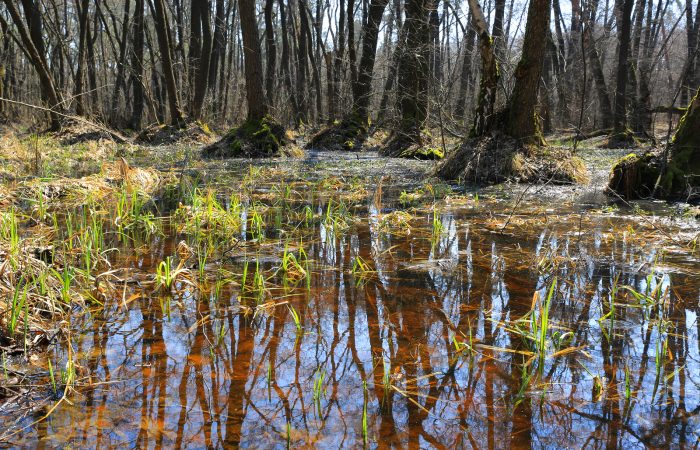Randall Anway is a Registered Architect in New York and Connecticut who specializes in design research and is inspired by natural patterns and systems read about the interesting nature of his work.
We’re fascinated by biomimicry and how it can be used in problem-solving. We invited Randall Anway, founder of Biomimicry NYC, to give us more insight. Randall’s vast experience includes building systems research for the Army Corps of Engineers and facility information management at Xerox Corporation, as well as high-end residential design. His research and design experience spans from software simulation to historical building materials and residential, commercial and institutional projects. He is a member of the American Institute of Architects (AIA), INCOSE Natural Systems Working Group, and a founding member of Biomimicry NYC.
What is biomimicry?
Biomimicry is an easily learned – children can do it – but powerful design innovation pattern that regards the natural world as a rich primary source of insights applicable to design problems. It’s a useful technique for design or planning, and quite unlike the so-called ‘green’ movement that seems fixated on checklists. Biomimicry is driven by the opportunity to learn from nature and substantively benefit from that learning over the long term. Rather than being driven by guilt over bad and obsolescing technologies, it gravitates toward timeless principles. As a discipline, it ultimately seeks to integrate human design with principles of living systems by taking cues from the complex and highly functional communities of living organisms all around us, though we could be centuries away from this goal in anything but rudimentary ways.
As an architect, why did you become interested in design research focused on natural patterns and systems?
When I attend to nature I notice a deep pattern that life attracts life. But, professionally I notice that many designers rather aggressively design life out. So I see a need. A rather deep, unsatisfied – really, thwarted – need I might add. It doesn’t have to be that way.
About 10 years ago, I began a learning journey that vividly drew my attention to the fact I and many fellow creatives (architects, engineers, artisans, and craftspersons) typically have an impoverished understanding of the biological world. It strikes me that this is a serious but slow-moving liability – which makes it a potentially dangerous situation. Architects are licensed professionals charged with protecting human health, safety, and welfare and I cannot in good conscience ignore this.
On balance, as a group, one of our strengths is a particular cognitive facility with patterns and systems – spatial reasoning. I believe we can apply that skill to co-evolving new understandings of how human work (in a broad sense of the term) interacts with the work of other species, hopefully towards the mutual benefit of all life.
That said, as competent as we are as a species in designing with foresight there is a lot of research involved in building and engineering projects and it can be very expensive. I’m always surprised at how much mucking around happens in the design world when just a little insight into how problems have already been solved in the biological world could save time. We’re missing opportunities.
The biological world is complex and very different from the artifactual world human enterprise exists to create. In my professional estimation, better integrating these distinctive systems of thought and action demands a different way of working in the world. We need to do some up-front work to make that practical.
So, to answer your question, this work became interesting to me because it’s intrinsically satisfying, there’s a compelling need for it, and in the larger scheme of things there can be economic as well as existential benefits. On top of that, the timing is good – there are amazing insights coming out of bioscience now. Studying natural patterns and systems not only helps to improve the chances the science will find an application and our designs work well, it is an expression of compassion and love for all living things. In other words, it’s really good for my heart.
What are some of your favorite examples that illustrate this approach to design?
There are too many examples that seem like they might be biomimetic because they look organic. But for me they fail the simple test of attracting life, becoming vibrant, and participating in the well-being of a place – like a forest. Abstract (geometrical) form alone has little to do with it. The Highline in New York City is a good example of an urban project that succeeds in that way. The Eden Project in the UK also succeeds on my simple test, in a more rural landscape. I also admire the work of Mike Reynolds who has created something of a community and a material ecology around his idea of ‘Earthship Biotecture’ as well as a simple way of building that’s deeply sustainable. Incidentally, a few of these homes can be found on Airbnb, and one that I stayed in I found quite appealing and comfortable.
In a more abstract and prosaic vein, the Resource Innovation and Solutions Network (RISN) in Phoenix, AZ aspires to close material loops and implement circular economy concepts by fostering diversity in design and regional economic development. I see this as biomimicry at a very high level – it’s not intuitively obvious how something like this emulates the closed loop cycles common in nature, nor are the economics a foregone conclusion. Design research is a necessity to support community growth and economic development.
Antonio Gaudi’s Sagrada Familia is an interesting example. While not explicitly biomimetic, in his searching work Gaudi was exploring some of the underlying principles that make biological forms beautiful to us as well as technically efficient with materials. There can be a spiritual dimension to this approach to design though it is definitely not religion. Anyway, I’d like to think if he were alive today, he’d be doing biomimicry.
As a software company, we think of self-adaptive systems as algorithms that solve complex computational problems. How is this thinking applied to architecture?
Great question. I’m not sure it is. Conventionally, buildings aren’t designed to be self-adaptive, nor are they thought of as solving computational problems. Systems are tacked on that provide a gross level of control and require humans in the loop for operation and maintenance. Not that it would be quite right to think about human beings separate from the ‘life’ of buildings, though.
On the other hand, conventional computer science doesn’t much consider physical computations performed by dynamic architectures such as genomes or aggregations of living cells. In the realms of structural engineering and urban planning, algorithms and computational tools exist to simulate material processes and these are certainly useful as far as they go. They amount to digital analogs of processes Gaudi was using a hundred years ago.
Now we’re on the cusp of something quite different: excitable and adaptive materials. I think of nature as diverse architectures that continuously solve problems of building and maintaining themselves and an inscrutable teacher. Computation is integral. If that thinking were applied more broadly we might evolve some amazing new ‘architectural’ capabilities.
I have to note that we seem to be at a bifurcation point with the word ‘architecture’. On onehand, it conventionally refers to buildings and on increasingly it refers to aspects of complex designs like software and robots. For me, these all refer to a way of thinking about how things dynamically depend on other things. When it comes to the world we’re building for ourselves, it’s all relevant and it all has a place. But I often wonder if we’re asking the right questions. How do we compute that? (I can see you smiling, Kay – you’re welcome.)
Can you recommend some good resources to learn more about biomimicry?
I find that books on the topic tend to be either so ‘touristy’ as to be almost meaningless or so narrow and technical as to be accessible only to a few. To take that a step further, in my experience many books on design innovation suffer from the reductionist habit of slicing and dicing, applied to the latest novelties. Of course, they all have their place and can be quite useful. But neither category (sorry, I do it too) really get into the fun and challenging art of tuning in to the languages of nature in the decidedly non-reductionist practice of discovering and designing things. So I’m going to stretch it a bit here.
There are a few fun reads that kind of fill this gap. ‘The Great Animal Orchestra’ by Bernie Krause is a first-person narrative at the intersection of music and biodiversity. ‘On Looking’ by Alexandra Horowitz is about getting past our personal ego and being available to experience.
Two unique resources that get at spatial reasoning applicable across scales – from microscopic to architectural: the first is the book ‘Shape’ by George Stiny about shape grammars, and the second is ‘Biotensegrity’ which is about biological structures. It might be an understatement to say they’re a little geeky but I think these are enabling concepts for excitable and adaptive architectures.
Two organizations relevant to biomimicry, working at a more abstract systems level are The Donella Meadows Institute (donellameadows.org) and The Buckminster Fuller Institute (www.bfi.org).
John Muir Laws is a great resource for building nature observation skills – website at johnmuirlaws.com. Another fun and useful resource are www.na2ure.com which offers a variety of pattern games based on patterns in nature. Last but not least, I’d suggest taking a look at asknature.com. But don’t just read about it. Do it! You’ll thank me someday – I’ll wait.



